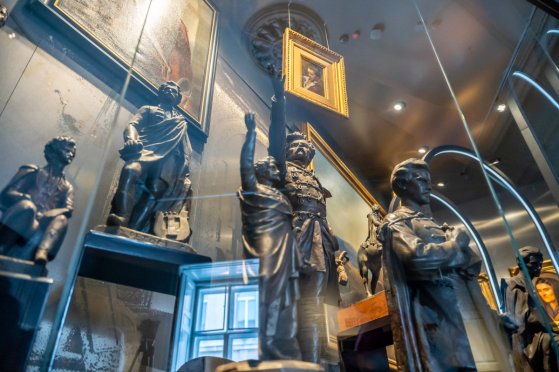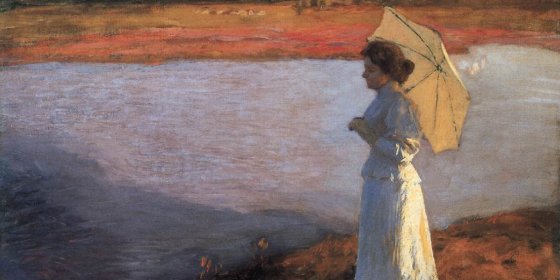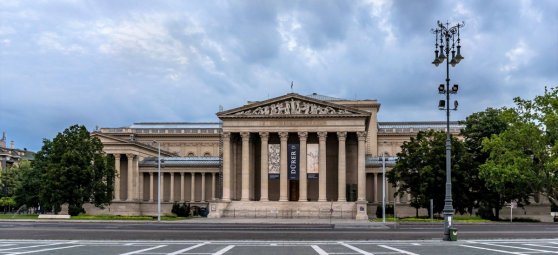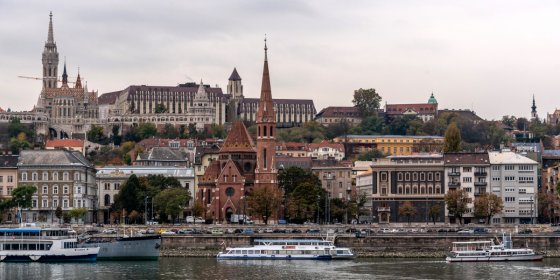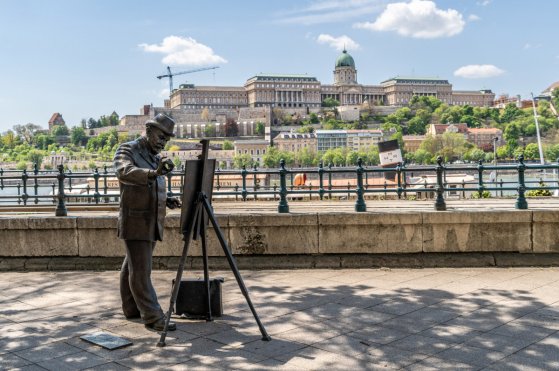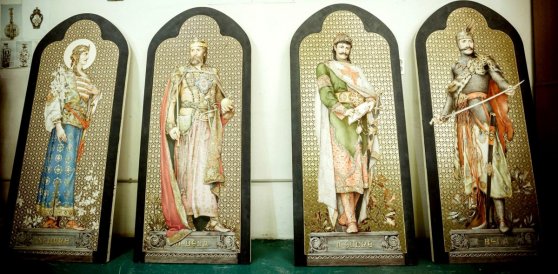 The „intertwined history” of the bridges and the city of Budapest
Which ideas and events have shaped the fate of bridges of Budapest and the cityscape? Alongside many other interesting facts, this question is also answered this newly published book by the Budapest City Archives, which introduces the history of bridges in Budapest.
The „intertwined history” of the bridges and the city of Budapest
Which ideas and events have shaped the fate of bridges of Budapest and the cityscape? Alongside many other interesting facts, this question is also answered this newly published book by the Budapest City Archives, which introduces the history of bridges in Budapest.
painting
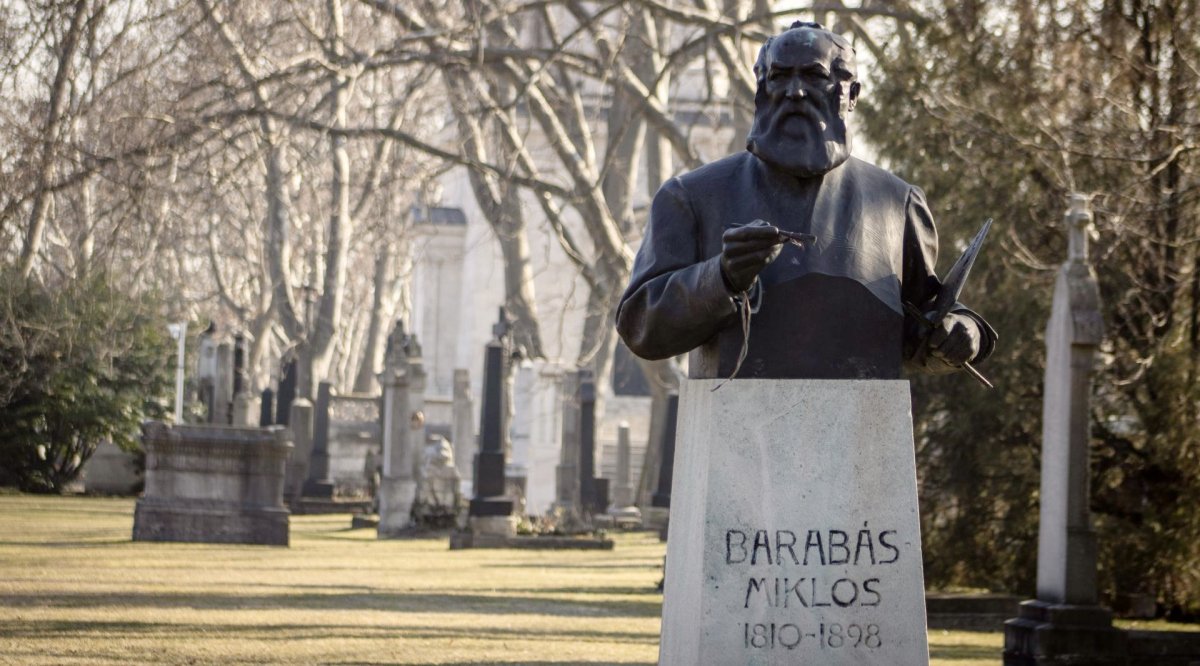 The 125th anniversary of the death of Miklós Barabás was commemorated in the Fiumei Road Cemetery
The 125th anniversary of the death of Miklós Barabás was commemorated in the Fiumei Road Cemetery
February 10, 2023 at 2:00 PM
Miklós Barabás was one of Hungary's most significant artists, and on the occasion of the 125th anniversary of his death, a wreath was laid on Friday at his tomb in the Fiumei Road Cemetery, which was made by Ede Telcs. It was said at the event: the portraits of the painter are important documents of the era, indispensable sources of Hungarian memory.
The new Petőfi exhibition opened at the PIM addresses the 21st-century people
January 14, 2023 at 2:30 PM
In honour of Petőfi, who was born 200 years ago, a new, large-scale permanent exhibition opened today, 14 January, at the Petőfi Literary Museum (PIM). The institution's undisclosed goal was to bring the poet's work closer to the people of the 21st century, to our everyday lives: the importance of home, the importance of friends or the sacrifice made for our loved ones are all topics that we can easily identify with. Artefacts, special scenery and multimedia tools also help us to get familiar with the work of the poet. Topics that are still relevant today, in Petőfi's interpretation.
Béla Iványi-Grünwald, a popular figure in art life in Budapest, was born 155 years ago
May 16, 2022 at 12:00 PM
Among the innovators of Hungarian painting at the turn of the century, we consider Béla Iványi-Grünwald, who was born 155 years ago. He studied at the Mintarajziskola [Design School] on Andrássy Avenue, later becoming a popular and defining figure in Budapest's art life, one of the founders and core members of the Fészek Klub [Nest Club]. He is also the founder of the Nemzeti Szalon [National Salon], an association of artists dissatisfied with official art policy, with its headquarters in Erzsébet Square. When he died at János Hospital in 1940, his contemporaries said goodbye not only to a talented artist but also to an always cheerful social man.
Two more of Molnár-C. Paul’s work can be found in the downtown parish church
May 2, 2022 at 6:00 PM
Two more of Molnár-C. Paul's two more paintings were placed in the Budapest-Downtown Parish Church on Thursday. Earlier, he also made the crucifix hanging above the sanctuary and the main altarpiece, as they were destroyed in World War II.
The Church of Arts - The building of the Museum of Fine Arts is 115 years old
December 5, 2021 at 11:00 AM
The Museum of Fine Arts is one of the most famous buildings in the country, without which the Heroes' Square is unimaginable. Yet this was erected the latest, it is ten years younger than the Kunsthalle opposite. However, its size and seriousness make this fact forgettable - and of course it is no longer young, it was opened to the public 115 years ago. In this context, Pestbuda presents its history and beautiful interiors, which house one of the richest art collections in Central Europe.
The pentagon of the Buda bank of the Danube - Pestbuda visited the completely renovated church of Szilágyi Dezső Square
October 21, 2021 at 10:30 AM
The Szilágyi Dezső Square Reformed Church was taken over by the faithful on Palm Sunday of 1896, so this year it celebrated the 125th anniversary of its construction. The Parish kept track of the anniversary and two years ago began the interior renovation of the building, which was largely completed in March. Due to the month of architecture - and as the Reformation Day approaches - Pestbuda was able to see what the new interior became like.
In the footsteps of our famous painters - Artist sculptures in Budapest
October 16, 2021 at 2:00 PM
On the occasion of the Hungarian Artists Day on 18 October, we followed in the footsteps of Budapest's artist sculptures: we show how the famous artists live in the memory of the capital, which painters' memories were preserved, why and how.
Painter of saints and kings – Twelve works by Ignác Roskovics adorned Saint Stephen's Hall
June 14, 2021 at 9:00 AM
Ignác Roskovics was one of the popular painters of the last decades of the 19th century and the turn of the century. Among the ecclesiastical and historical works that define his oeuvre, the twelve paintings made for the St. Stephen's Hall in Buda Castle stand out, based on which ceramic paintings were made in the Zsolnay factory. The works, ten of which depict the most important kings and saints of the House of Árpád, and two depict scenes from the life of St. Stephen, will be on display again from 20 August in the recreated St. Stephen's Hall.
More articles
 The „intertwined history” of the bridges and the city of Budapest
Which ideas and events have shaped the fate of bridges of Budapest and the cityscape? Alongside many other interesting facts, this question is also answered this newly published book by the Budapest City Archives, which introduces the history of bridges in Budapest.
The „intertwined history” of the bridges and the city of Budapest
Which ideas and events have shaped the fate of bridges of Budapest and the cityscape? Alongside many other interesting facts, this question is also answered this newly published book by the Budapest City Archives, which introduces the history of bridges in Budapest.
 The Bridge Report, which brought a turning point in the history of Budapest
A travel report that changed the history of Pest and Buda, as well as Hungary. The little book contributed to the change of half a thousand years of legal customs and the implementation of an investment of unprecedented size and technical quality. This book was The Bridge Report [Hídjelentés in Hungarian].
The Bridge Report, which brought a turning point in the history of Budapest
A travel report that changed the history of Pest and Buda, as well as Hungary. The little book contributed to the change of half a thousand years of legal customs and the implementation of an investment of unprecedented size and technical quality. This book was The Bridge Report [Hídjelentés in Hungarian].
 Drama on the university wall - The heroic monument was planned 95 years ago
In the constant hustle and bustle of the Egyetem Square in Pest, the students may not even notice the monument that decorates the short section of wall between the church and the central building of ELTE. However, it commemorates their predecessors, the heroes who fought for their country in World War I, and those who heroically helped them. The first design of the dramatically collapsing soldier was born in 1928, ninety-five years ago.
Drama on the university wall - The heroic monument was planned 95 years ago
In the constant hustle and bustle of the Egyetem Square in Pest, the students may not even notice the monument that decorates the short section of wall between the church and the central building of ELTE. However, it commemorates their predecessors, the heroes who fought for their country in World War I, and those who heroically helped them. The first design of the dramatically collapsing soldier was born in 1928, ninety-five years ago.

